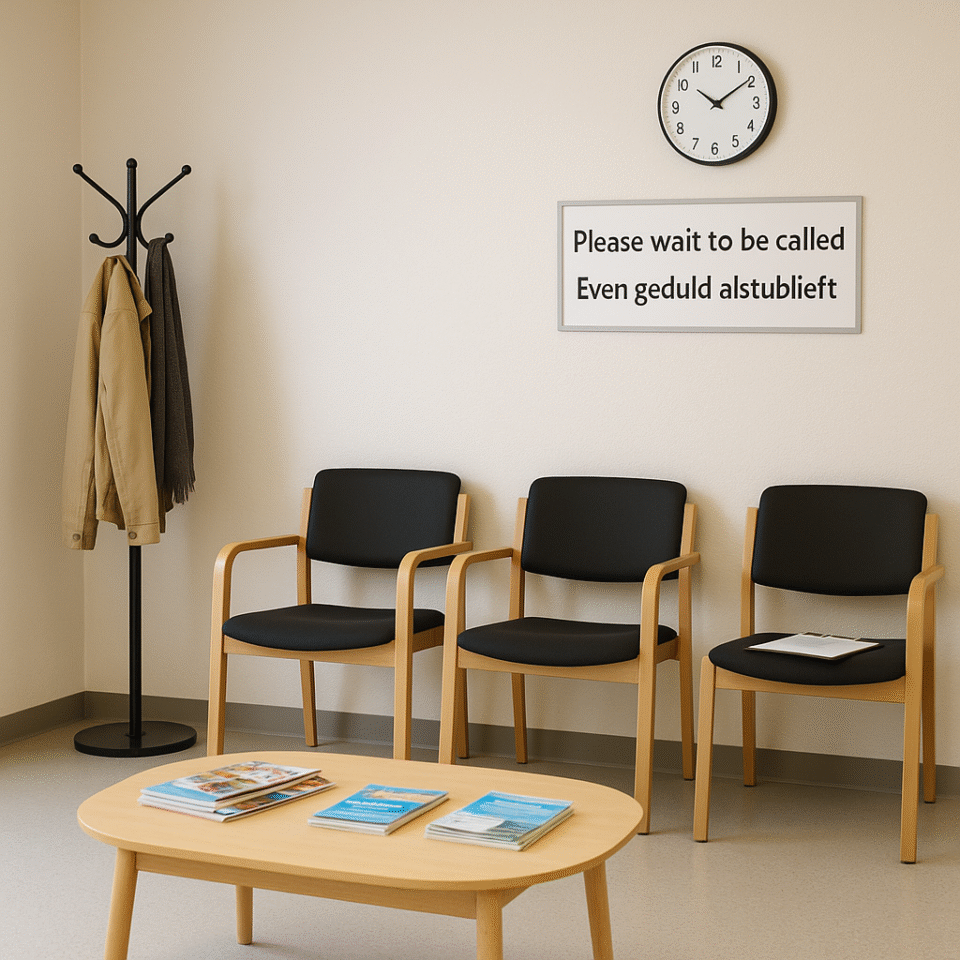Dutch healthcare for Americans can feel like a massive shift—not just in how it’s paid for, but in how it’s delivered, accessed, and understood. If you’re planning a move to the Netherlands, understanding the healthcare system before you arrive can save you a lot of confusion and stress.
The Dutch healthcare system consistently ranks among the best in Europe, but it’s built on a different foundation than the American model. This guide breaks down what American expats should know—from logistics and costs to communication styles and cultural expectations.
How the Dutch Healthcare System Works
The Netherlands operates on a regulated private insurance model. Every resident is required to carry basic health insurance (basisverzekering), which is offered by private insurers but strictly regulated by the government. This system blends universal coverage with market competition, aiming to balance quality, access, and cost.
Despite being mandatory, this is not a single-payer or government-run system. Insurers compete on price and service, but the coverage itself is standardized by law.
A few key details:
- Basic health insurance is mandatory for all residents
- Monthly premiums typically range from €120 to €150
- The standard annual deductible (eigen risico) is €385
- Supplementary insurance is available for things like dental care, physiotherapy, and mental health support
Getting Started: Your First Steps
Once you arrive in the Netherlands, here’s what you’ll need to do to get started:
First, register with your local municipality (gemeente) to receive a BSN (citizen service number). Then, within four months of registering, you must choose and purchase a health insurance plan—retroactive to the day you registered.
Next, find a general practitioner (huisarts) in your area and register as a patient. This doctor will be your main point of contact for nearly all medical concerns. In the Dutch healthcare system, you generally can’t see a specialist without a referral from your huisarts.
Finally, register with a local pharmacy (apotheek) to ensure access to prescription medications. Most neighborhoods have at least one, and the registration process is simple.
Costs and Budgeting
Expect to pay €120–150 per month for basic insurance, plus a potential annual deductible of €385. You can choose a higher deductible if you want to lower your monthly premium.
Lower-income residents may be eligible for a healthcare allowance (zorgtoeslag), which helps offset the cost of insurance. You apply through the Dutch tax office (Belastingdienst).
Co-payments exist for certain services, but they’re usually modest. And perhaps most importantly, billing is straightforward: no surprise invoices, no in-network gymnastics, no unreadable statements.
Cultural Differences for Americans Using Dutch Healthcare
One of the biggest adjustments for American expats isn’t the logistics—it’s the mindset.
Dutch healthcare tends to be cautious, preventive, and measured. Doctors often start with the simplest, least invasive treatment and escalate only if necessary. This approach can feel frustrating if you’re used to more aggressive interventions.
You may notice fewer prescriptions, lower dosages, and less urgency around non-critical concerns. Dutch GPs aren’t dismissive—they’re just trained to rule out serious illness before exploring secondary symptoms. Regular check-ups for healthy adults are not common unless there’s a specific concern.
Communication style also differs. Dutch doctors are typically direct. They won’t sugarcoat things, and they don’t do much small talk. It’s not coldness; it’s cultural efficiency.
You might also experience longer wait times for specialist care, particularly for non-urgent concerns. This is a reflection of prioritizing care based on medical need rather than speed or convenience.
Navigating the System Day to Day
Once you’re registered and insured, the Dutch healthcare system becomes relatively easy to manage.
If you’re looking for an English-speaking huisarts, expat forums and local recommendations are your best starting point. Most providers in urban areas speak functional English, especially in university cities.
Insurance comparison sites like Independer.nl can help you compare basic and supplementary policies. Some employers offer group discounts, so it’s worth checking before purchasing a plan independently.
For care access:
- Call 112 for emergencies
- Use the huisartsenpost for after-hours urgent care
- Start with your huisarts for routine or specialist referrals
If you’re managing long-term prescriptions, bring documentation from your U.S. provider. Not all medications are available under the same brand names here, and Dutch doctors often favor generics.
Mental healthcare is partially covered under basic insurance, though you may need supplementary coverage for extended or specialized services. Waitlists can be long, so if you need ongoing therapy, consider international telehealth options as a stopgap.
Integration Takes Time
Adapting to the Dutch healthcare system is less about learning rules and more about adjusting expectations. You may initially feel like you’re getting less—but over time, many expats find that they’re getting what they actually need, with less stress, more predictability, and fewer financial surprises.
Yes, the system is slower in some ways. But it’s also deeply functional. There’s a quiet confidence to it. The costs are known, the gatekeepers are clear, and the burden of navigating insurance bureaucracy is significantly lower.
Understanding that difference—and working with it instead of against it—is where long-term comfort starts to take root.
Further Resources
- Government overview of Dutch health insurance
- Zorgverzekeringslijn (English site for health insurance help)
- Independer: Compare insurance options in English








